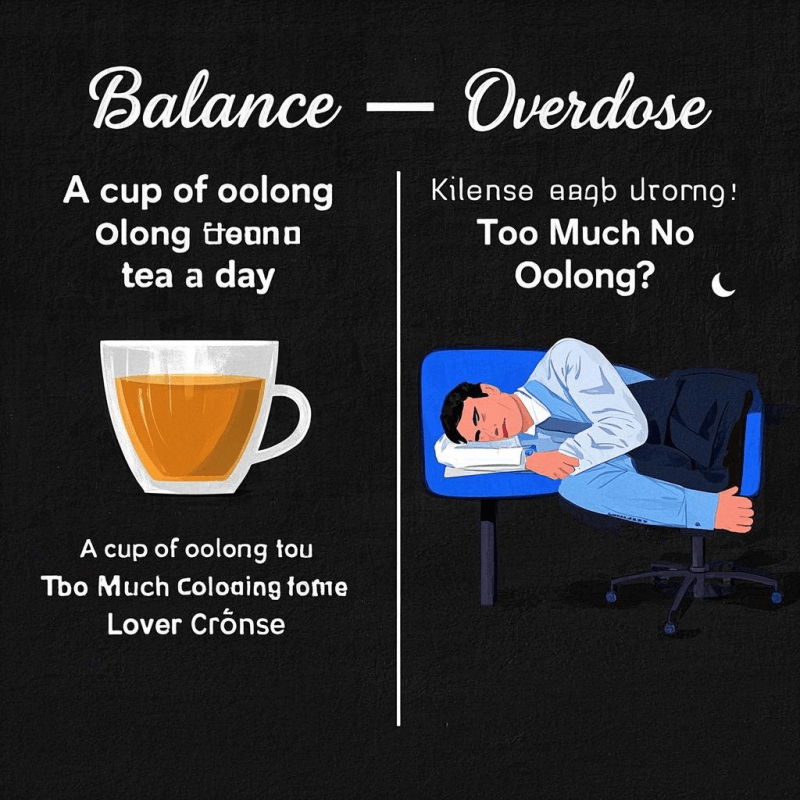1. Introduction: Why You Should Know About Oolong Tea Side Effects
In the realm of functional beverages, oolong tea has long been celebrated for its complex flavor profile and potential health benefits, from boosting metabolism to improving heart health. Yet, like any caffeinated or bioactive substance, it carries oolong tea side effects that deserve careful consideration. A 2023 survey by the National Coffee Association revealed that 32% of consumers actively research beverage side effects before incorporating them into their routines—a trend driven by a growing desire for informed wellness choices.
While this semi-oxidized brew offers numerous advantages, overlooking its potential downsides can lead to unintended consequences, from disrupted sleep to digestive discomfort. Whether you’re a daily drinker or new to oolong, understanding how to navigate its risks is key to enjoying its benefits safely. In this comprehensive guide, we’ll explore common oolong tea side effects, who should moderate consumption, and evidence-based strategies to minimize risks—so you can sip with confidence.
2. What Is Oolong Tea and How Is It Typically Consumed?
Oolong tea is a semi-oxidized tea (oxidation levels: 8–85%) that bridges the gap between green tea’s freshness and black tea’s robustness. Originating in China’s Fujian province and later gaining popularity in Taiwan, it’s crafted through a meticulous process of withering, oxidation, and roasting, resulting in a diverse range of flavors—from delicate floral notes to rich, roasted undertones.
Typical Consumption Scenarios:
- Morning Ritual: Many start their day with a cup to harness its moderate caffeine kick (12–55mg per 8oz cup) for sustained energy.
- Post-Meal Digestif: Sipped after meals to aid digestion, thanks to its polyphenol content that supports gut health.
- Gongfu Brewing: In traditional settings, brewed multiple times in small vessels like gaiwans to explore evolving flavor layers.
For those eager to experience high-quality oolong, Discover the subtle beauty of oolong tea with our premium leaves sourced from heritage farms that prioritize sustainable cultivation.
3. Common Oolong Tea Side Effects You Might Experience
While moderate consumption is generally safe, individual reactions vary based on tolerance, health status, and drinking habits. Here are the most frequently reported oolong tea side effects:
1. Caffeine-Related Reactions
Oolong’s caffeine content, though lower than coffee (95mg per cup), can still cause issues for sensitive individuals:
- Jitters & Anxiety: Consuming more than 3 cups daily may overstimulate the nervous system, leading to restlessness. A WebMD report notes that caffeine sensitivity is genetic, with 20% of people metabolizing it slower than others.
- Insomnia: Drinking oolong after 2 PM may disrupt sleep cycles, as caffeine has a half-life of 3–5 hours.

2. Digestive Discomfort
- Stomach Irritation: Tannins in oolong can aggravate the stomach lining, especially when consumed on an empty stomach. A study in [The American Journal of Gastroenterology](https://www.amj gastro.com) linked high-tannin beverages to increased acid reflux risk in 15% of regular drinkers.
- Constipation: In rare cases, excessive consumption may lead to temporary digestive slowdown due to tannin’s binding effect on iron and protein.

3. Allergic Reactions
While uncommon, tea allergies affect about 1–2% of the population, often triggered by proteins in tea leaves:
- Skin Rashes or Hives: Immediate reactions may occur in sensitive individuals.
- Swollen Lips or Throat: A severe but rare response that requires medical attention.
4. Who Should Avoid Oolong Tea and Why
Certain groups may need to limit or avoid oolong tea due to health interactions:
1. Pregnant or Breastfeeding Women
- Caffeine crosses the placenta and may affect fetal development. The American College of Obstetricians and Gynecologists recommends limiting daily caffeine intake to 200mg—equivalent to 3–4 cups of oolong.
- Tannins can also reduce iron absorption, a critical nutrient during pregnancy.
2. Individuals with Heart Conditions
- Caffeine may temporarily raise blood pressure and heart rate, posing risks for those with arrhythmia or uncontrolled hypertension. A Mayo Clinic study advises consulting a doctor if you experience palpitations after drinking caffeinated teas.
3. Iron-Deficiency Anemia Sufferers
Tannins in oolong can block up to 60% of non-heme iron absorption when consumed with iron-rich foods. Experts at Medical News Today suggest waiting 1–2 hours after meals to drink oolong.
4. People with Anxiety Disorders
The caffeine in oolong may exacerbate symptoms like restlessness or panic attacks in those with untreated anxiety conditions.
5. How Much Oolong Tea Is Too Much? Caffeine and Sensitivities
Determining a safe intake depends on your caffeine tolerance, body weight, and overall health:
1. Caffeine Limits by Health Organizations
- FDA Guidelines: A daily limit of 400mg caffeine (about 7–8 cups of oolong) is considered safe for most adults.
- Individual Variability: Lightweight individuals or those with low tolerance may experience side effects at 100–200mg (2–4 cups).
2. Signs You’re Overdoing It
- Restlessness or inability to focus
- Nausea or stomach cramps
- Rapid heartbeat or shortness of breath
3. Moderation Tips
- Start with 1–2 cups daily and observe your body’s response.
- Choose lower-caffeine varieties like gently oxidized Taiwanese High Mountain Oolong, which typically contain 20–30mg caffeine per cup.
6. Expert Tips to Enjoy Oolong Tea Without the Side Effects
With mindful consumption, you can minimize risks while savoring oolong’s benefits:
1. Optimize Brewing for Reduced Side Effects
- Water Temperature: Steep lightly oxidized oolongs at 185°F (85°C) to minimize tannin extraction; use 205°F (96°C) for roasted varieties to enhance flavor without excess bitterness.
- Steeping Time: Limit the first steep to 30 seconds to control caffeine release—subsequent steeps will have progressively less caffeine.
Elevate your brewing precision with authentic oolong teaware designed to balance flavor and safety.
2. Time Your Consumption Wisely
- Avoid Empty Stomach: Pair oolong with a light snack (e.g., nuts, whole-grain bread) to buffer stomach acid.
- Cut Off by Midday: Stop drinking caffeinated teas by 2 PM to protect sleep quality.
3. Choose the Right Variety for Your Tolerance
- Low-Caffeine Options: Try aged oolongs or lightly oxidized styles like Anxi Tie Guan Yin.
- Blended Formulas: Some brands offer decaffeinated oolongs, though traditionalists may prefer moderating intake over processing.
4. Listen to Your Body
Keep a journal of how you feel after drinking oolong—note any changes in energy, digestion, or mood to identify personal thresholds.
7. Conclusion: Weighing the Benefits and Side Effects of Oolong Tea
Oolong tea is a versatile beverage with a rich history and science-backed advantages, but it’s not without considerations. While oolong tea side effects like caffeine sensitivity or digestive issues are manageable with moderation and mindful habits, they highlight the importance of personalized consumption.
By understanding your tolerance, timing your intake, and choosing high-quality varieties, you can enjoy oolong’s complex flavors and health benefits without compromising well-being. Ready to explore oolong safely? Browse our oolong tea collection for every taste preference and discover blends that align with your lifestyle—because informed sipping is the key to a satisfying tea journey.
Remember: The goal isn’t to avoid risks entirely but to navigate them wisely. With the right approach, oolong can be a flavorful and functional addition to your daily routine. Whether you’re drawn to its metabolic perks or simply crave its unique taste, staying informed ensures every cup is a choice you can feel good about。

Pingback: Unlock the Oolong Tea Meaning: Discover What Sets This Ancient Brew Apart
Pingback: Oolong Tea and Pregnancy: Is It Safe? Expert Insights & Guidelines